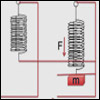
Session Overview
 |
This lecture is about how to use computation to help understand experimental data. It talks about using linear regression to fit a curve to data, and introduces the coefficient of determination as a measure of the tightness of a fit. |
Session Activities
Lecture Videos
- Lecture 17: Curve Fitting (00:51:00)
About this Video
Topics covered: Arrays, curve fitting, numpy, pylab, least squares fit, prediction.
Resources
- Lecture code handout (PDF)
- Lecture code (PY)
- Lecture slides (PDF)
- Lecture data files (ZIP) (This ZIP file contains: 3 .txt files.)
Recitation Videos
-
Recitation 7: Distributions, Monte Carlo, and Regressions (00:47:27)
Recitation 7: Distributions, Monte Carlo, and Regressions
> Download from iTunes U (MP4 - )
> Download from Internet Archive (MP4 - )
About this Video
Topics covered: Data distributions, mean, standard deviation, Monte Carlo simulations, Monty Hall problem, Riemann sum method, data regressions, r^2 (r-squared), coefficient of termination, scientific applications of programming.
Check Yourself
What is an objective function?
› View/hide answer
One that provides a quantitative assessment of how well the curve fits the data.
What method of curve fitting is used by polyfit?
› View/hide answer
Linear regression.
What does curve fitting do?
› View/hide answer
Relates an independent variable to an estimated value of a dependent variable.
What is the coefficient of determination?
› View/hide answer
Coefficient of determination, R^2, is equal to 1 – (estimated error)/(variance of the actual data)
